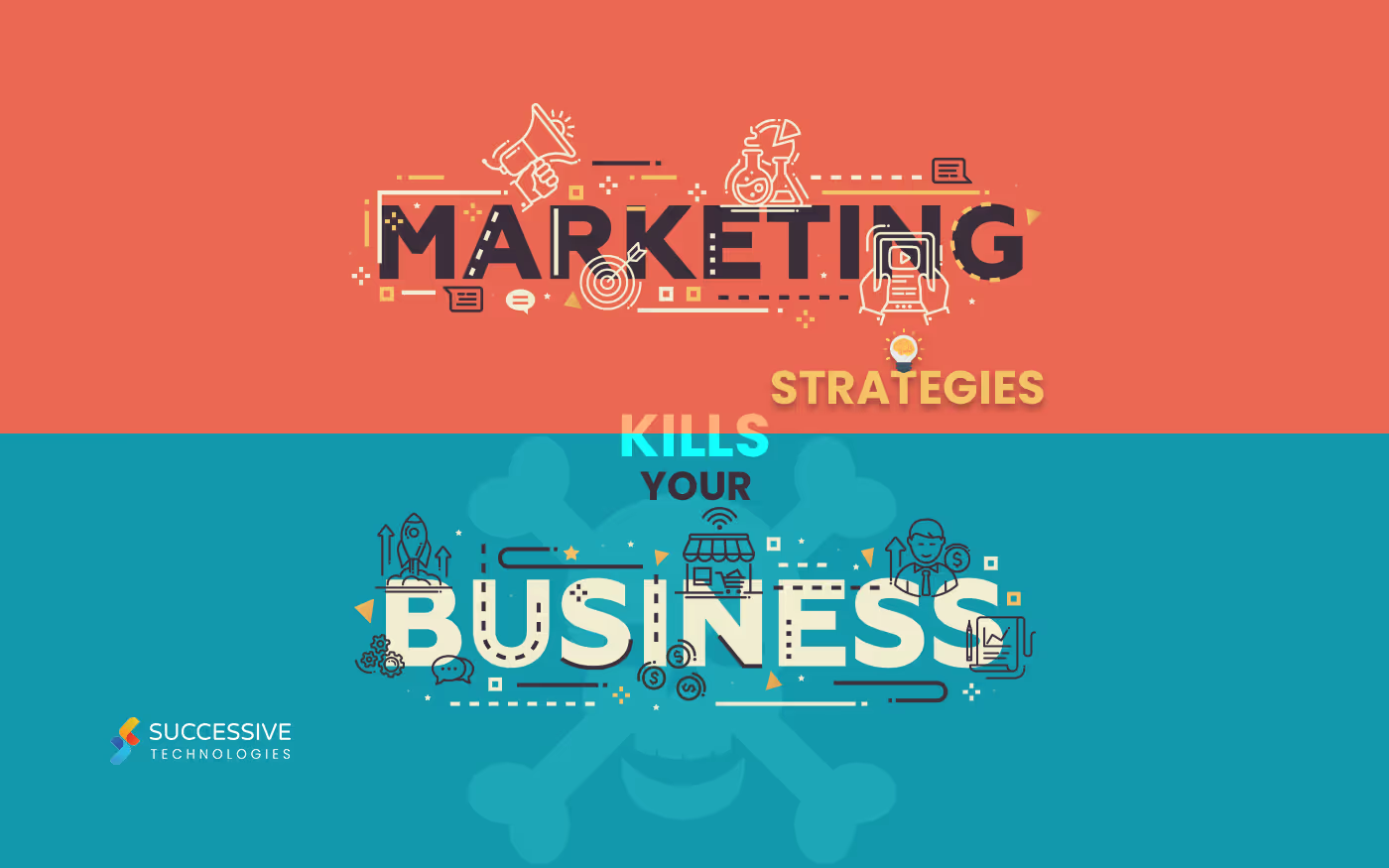Business marketing has been developing from the days when early humans bartered food and clothing. Since those far off times, business marketing had developed and evolved over the centuries to reach the position it occupies today. It has become a sophisticated beast with many arms and methods to achieve its end. There is no predefined formula to tame such a beast but there definitely are some strict NO-NOs when it comes to dealing with it( Just metaphor for marketing guys, get on with it ).
There are a lot of successful marketing strategies and even more are the poor ones which are destined to harm your business. Days of flyers and sign holders are over. Even clickbait ads on websites don’t work as the consumer is predetermined to focus while browsing and ads are seen as distractions. Interruptive marketing doesn’t work anymore.
Huge budgets are wasted on these outdated techniques and the people responsible have nothing to show for it. It’s time to get on with the newer and smarter techniques and ditch the older and failed ones.
Marketing Techniques to Avoid:
1. Mass Printing Physical Advertising Materials
When was the last time you picked up a flyer and acted on it? Before the internet, brochures, pamphlets, and posters were important in reaching a large audience. Nowadays, they’re more likely to end up in the recycling bin than on the kitchen table. Printed advertising materials are becoming relics; there’s no longer a need to spend significant money to print thousands upon thousands of brochures. Instead, post your information on your website, where interested consumers can find it.
2. Filler Advertising: Creating Content Just for Content’s Sake
Nothing can be more of a waste than putting advertisements out just because you think it’s required. By creating content without direction, you are doing more harm than good. You are creating a marketing campaign based around nothing, and though your customers may not remember the ad, they may remember your company name in a bad light.
3. Spamming = Junk Mail
No one likes junk mail. It’s just a pile of mail you have to sort through to find the letters you actually wanted. The same goes for email. It’s up to you to attract and hold the attention of customers. By bombarding them with unwanted or unsolicited emails, you are tearing down your company's reputation. If you must email, make sure that you do it on a monthly basis or less. It will make your potential customers more apt to open your email and save them the frustration of filtering through products they have no interest in buying. And it’ll end up in the spam folder anyway
4. Cold Calling is useless
Cold calling is dead. At some point, the prospect of calling potential customers to obtain sales was somewhat lucrative, but today, it couldn’t be more of a waste. Telemarketing is a surefire way to anger customers and annoys them to no end. If you have to call customers, make sure that they signed up for your call list and make sure to call at an opportune point in the day. Nothing is worse than sitting down to dinner and being bothered by unsolicited phone calls.
5. Not Marketing Your Website
I can’t tell you how many times I’ve seen very smart business people come to us with the naïve idea that when the new website is live, it will somehow magically market itself, and visitors will flock to the website by the millions. There are over 1 billion websites on the Internet today. What are the chances of someone stumbling upon your website? Just as your company’s sales will dry up without marketing, your website will also have little or no traffic without marketing. Without traffic, your website is a dead weight in the digital universe. There will be no visitors, no leads, and no sales. Regardless of your website’s purpose or objective, proper marketing is always the key to its success.
6. Ignoring Trends: Making Yourself Invisible to Clients
In the modern age of technology, social media spreads the latest trends. By not paying attention to what people are talking about or what websites they are using, you are hurting yourself and wasting valuable resources. Make sure you know what people want and where they would go to find it.
Bad marketing is something many companies suffer from, but that doesn’t mean that you have to. With just a little forethought, you can turn your advertising into something that’s well-received. If you don’t feel you have the resources to manage your marketing, hire a professional company to do the work for you, and take the hassle out of it. You can be your best friend or your own worst enemy. It’s up to you.
7. The marketing team is working solo
Your marketing manager maybe Superman or Superwoman but to make a business successful — working solo is not the answer. To drive the growth of a business, different teams need to work together, for example, your sales team, product team as well as the customer service team should be involved in the marketing process. For instance, your marketing team generated lots of qualified leads but only a small percentage became paying customers. For a case like this, you may want to have a look at your sales funnel, product, and customer service team performance.
8. Don’t keep up to date with search engines and social media algorithm
Your website was SEO optimized when it was launched and then you just sit back and relax — this mistake could cost you a fortune.
Search engines and social media platform change their algorithm from time to time. Recently, Google is gradually rolling out mobile-first indexing. If your website is not responsive or the mobile version does not display full content as its web version, your website’s ranking could be affected because of this algorithm update.
Similarly, Facebook has changed its algorithm and the new updates prioritize content from friends and family as this kind of content usually creates meaningful conversation and interaction.
If you stick with your old SEO and social media strategy, you will never win the ever-changing marketing game.
9. Marketing to Anyone and Everyone
Most companies make the mistake of focusing exclusively on the number of visitors when analyzing traffic to their website. If the traffic is growing, they are happy, and they will do anything to bring more visitors to the website, regardless of whether these people will become customers. In reality, your website needs the “right” traffic. You need visitors that can be converted into customers. When I refer to the “right” visitors, I am not referring to only demographic parameters. You should be marketing to a niche, not a demographic.
10. Not Measuring Returns on Marketing
Neglecting to measure your marketing results is one of the worst sins in marketing. How can you know if something is working if you are not measuring results? You can’t. Yet, many businesses make this mistake. They sporadically pour time and money into different forms of marketing, and as long as their traffic stays the same or grows, they are happy. Implementing marketing strategies blindly without measuring return on investment is a terrible way to spend your company’s money. This means you are not in control. You are relying on luck and gambling the money away. Another common problem is that most companies who measure results do so incorrectly. They look at “vanity metrics” like traffic or overall leads or sales without an in-depth understanding of how individual marketing campaigns contribute to these numbers.
.avif)










.jpg)









